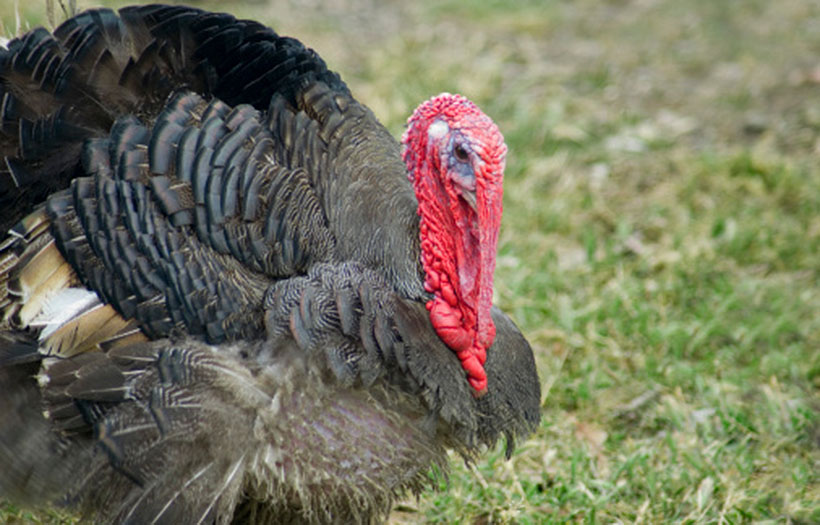Turkey Talk

“I am going to raise my own Thanksgiving turkey someday!” Has this thought crossed your mind? With Thanksgiving just a few days away, we thought the time was right to give you a brief overview about raising turkeys and some of the key differences between commercial and heritage breeds.
Let’s review some quick turkey terminology first.
At the grocery store
Commercially raised turkeys are primarily white and bronze breeds. These turkeys typically dress (or finish) at 40+ pounds for a Tom and nearly 20 pounds for a hen. Tom turkey meat is traditionally used for deli meats, turkey bacon, or ground turkey while almost all whole birds on your thanksgiving table are female hens. They are a mix of both dark and white meat, and it is their large white breast meat that make them a popular choice for the commercial turkey business. These breeds of turkeys also are common for 4-H show projects. As a backyard flock, however, they are not ideal, unless you have a strict harvest date in mind. Bred for fast production of breast meat, these breeds are unable to mate naturally, so, in a commercial setting are bred using artificial insemination.
Heritage breeds for your backyard
Heritage breed turkeys are often a logical choice for the backyard poultry enthusiast. These birds dress at around 15 pounds and include almost all dark meat. Breeds within the Heritage family include Black Spanish, Blue Slate, Red Bourbon, Royal Palm and Narragansetts. Heritage turkeys serve as an advantage due to their longer lifespan and ability to breed naturally. If you’re looking for a smaller option of Heritage turkey, a great breed would be the Midget White turkey. These dress at around 8-13 pounds and are known for their friendly temperament.
If you’re interested in starting your own turkey flock, doing your research is vital. Turkeys require slightly more attention than your typical backyard chicken, so making sure your facility is ready to take on turkeys is key.
Some of the unique turkey-keeping aspects include:
- Location: Choose a spot that has never had chickens grown on it some diseases like Blackhead won’t impact chickens but will kill turkeys.
- Feed: Young turkeys need an extremely high protein content feed. Without enough protein, turkeys have been known to eat each other. Country Feeds Gamebird feed is a great choice. Don’t worry about limit feeding as turkeys can have access feed 24 hours a day.
- Poults: Baby turkeys grow quickly, but, like chicks, cannot regulate body temperature well. Even though they may look like adult birds, don’t introduce young turkeys to outdoors until after 10 weeks of age.
- Space: Turkeys are much bigger than chickens, so allow an appropriate amount of space for them to grow without being crowed.
If you are raising for the purpose of harvesting the turkeys, it’s important to get your timing right. You will want to be purchasing poults in April/May for butchering at Thanksgiving time. Don’t forget to book your butchering far in advance, as facilities book up fast on these services.
Turkeys can be a fun and rewarding project with proper preparation and care.
So go forth and gobble!
